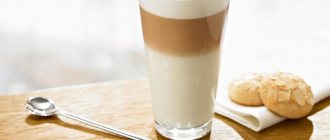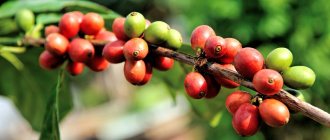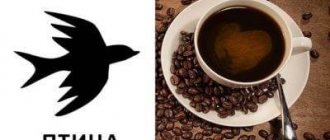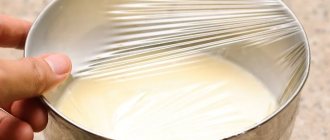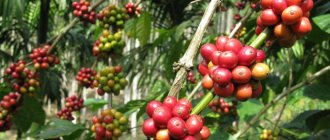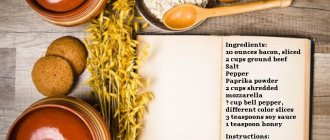American measuring cup
- 1/4 cup - 60ml
- 1/3 cup – 75ml
- 1/2 cup – 125ml
- 2/3 cup - 150ml
- 3/4 cup - 175ml
- 1 cup – 250ml
- 1 cup white flour 140 g
- 1 cup sifted white flour 115 g
- 1 cup cake flour 130 g
- 1 cup sifted cake flour 100 g
- 1 cup whole wheat flour 150 g
- 1 cup sifted whole wheat flour 130 g
- 1 cup bread flour 160 g
- 1 cup sifted bread flour 130g
- 1 cup sugar 200 g
- 1/2 cup potato flakes 35g
- 1 cup self-raising flour - 120 g
- 1 cup of pea flour (chickpeas) - 90 g
- 1 cup of tempura flour - 125 g
- 1 cup soy flour - 135 g
- 1 cup brown sugar – 180 g
- 1 cup of pine nuts – 130 g
- 1 cup walnuts – 114 g
- 1 cup cashews, roasted – 150 g
- 1 cup almonds, roasted, coarsely chopped/ground – 120/180 g
- 1 cup of sesame – 150 g
- 1 cup of pumpkin, grated on a coarse grater – 125 g
- 1 cup zucchini, grated – 135 g
- 1 cup Parmesan, grated – 120 g
- 1 cup of crackers – 120 g
- 1 cup fresh bread crumbs – 90 g
- 1 cup Panko breading – 60 g
- 1 cup couscous – 185 g
- 1 cup of raisins – 200 g
- 1 cup water chestnut, chopped – 180 g
- 1 cup white cabbage, chopped – 75 g
- 1 cup Chinese or Savoy cabbage, chopped – 45 g
- 1 cup green coriander (cilantro), coarsely chopped/crushed – 30/60 g
- 1 cup of green peas – 160 g
- 1 cup coconut flakes – 60 g
- 1 cup baby spinach (leaves) – 50 g
- 1 cup of black currants – 120 g
- 1 cup dried crushed dates – 180 g
- 1 cup of dry chickpeas – 220 g
Americans sell butter not in packs, but in sticks. An American stick of butter weighs 113 grams, which is 4 ounces.
Converting US Weights and Measures to Metric (and a few other useful tables)
This material has been prepared specifically for those who like to experiment and cook using recipes from American books or blogs. To ensure that your sweets are always a success, we will help you understand the system of weights and measures in which American housewives are accustomed to working, as well as the conventions they use.
Symbol table
| Conventions (in American recipes) | Translation |
| C. = cup | cup |
| t. = tsp. = teaspoon | tea spoon |
| T. = tbsp. = tablespoon | tablespoon |
| g. = gr = gram | gram |
| kg. = kilogram | kilogram |
| F = Fahrenheit | degrees Fahrenheit |
Metric Conversion Chart for Basic Ingredients
| Oil | ||
| 8 American tablespoons (1 pack (1 Stick)) | 110 gr | |
| Flour | ||
| 1 American cup | 150 gr | |
| Sugar | ||
| 1 American cup | 225 gr | |
Table of temperature conditions (some values are rounded within 3 degrees Celsius)
| F | WITH |
| 275 | 135 |
| 300 | 150 |
| 325 | 160 |
| 350 | 175 |
| 375 | 190 |
| 400 | 205 |
| 425 | 220 |
| 450 | 230 |
| 475 | 245 |
The following table provides data for converting liquid volumes
| Volume conversion (data in table is valid for liquids only) | |
| Specified quantity | Metric equivalent |
| 1 teaspoon | 5 ml |
| 1 tablespoon or 1/2 fl oz | 15 ml |
| 1 fl oz or 1/8 cup | 30 ml |
| 1/4 cup or 2 fl oz | 60 ml |
| 1/3 cup | 80 ml |
| 1/2 cup or 4 fl oz | 120 ml |
| 2/3 cup | 160 ml |
| 3/4 cup or 6 fl oz | 180 ml |
| 1 cup or 8 fluid ounces or half a pint | 240 ml |
| 1 1/2 cups or 12 fl oz | 350 ml |
| 2 cups or 1 pint or 16 fl oz | 475 ml |
| 3 cups or 1 1/2 pints | 700 ml |
| 4 cups or 2 pints or 1 quart | 950 ml |
| 4 quarts or 1 gallon | 3.8 l |
| Note: In cases where there is no need for high data accuracy, you can round the values as follows. 1 cup = 250 ml 1 pint = 500 ml 1 quart = 1 L 1 gallon = 4 L | |
Weight conversion table
With this table you can convert ounces to grams. But keep in mind that the ounces in this table are different from those in the table for liquid products.
| Weight conversion | |
| Specified quantity | Metric equivalent |
| 1 oz | 28 g |
| 4 oz or 1/4 lb | 113 g |
| 1/3 lb | 150 gr |
| 8 ounces or 1/2 pound | 230 gr |
| 2/3 lb | 300 gr |
| 12 oz or 3/4 lb | 340 gr |
| 1 pound or 16 ounces | 450 gr |
| 2 pounds | 900 gr |
Other (non-liquid) ingredients
The volume of non-liquid ingredients specified in American recipes (if it is more than 2 tablespoons or 1 fluid ounce) is calculated using the following table.
| Ingredient weights in grams | |||||||
| Ingredient | 1 cup | 3/4 cup | 2/3 cup | 1/2 cup | 1/3 cup | 1/4 cup | 2 tbsp. |
| Wheat flour | 120 gr | 90 gr | 80 gr | 60 gr | 40 gr | 30 gr | 15 g |
| Sifted wheat flour | 110 gr | 80 gr | 70 gr | 55 gr | 35 gr | 27 g | 13 g |
| Granulated sugar (cane) | 200 gr | 150 gr | 130 gr | 100 gr | 65 gr | 50 gr | 25 gr |
| Confectionery sugar (cane) | 100 gr | 75 gr | 70 gr | 50 gr | 35 gr | 25 gr | 13 g |
| Brown sugar | 180 gr | 135 gr | 120 gr | 90 gr | 60 gr | 45 gr | 23 g |
| Corn flour | 160 gr | 120 gr | 100 gr | 80 gr | 50 gr | 40 gr | 20 gr |
| Corn starch | 120 gr | 90 gr | 80 gr | 60 gr | 40 gr | 30 gr | 15 g |
| Raw oatmeal | 90 gr | 65 gr | 60 gr | 45 gr | 30 gr | 22 gr | 11 g |
| Salt (table) | 300 gr | 230 gr | 200 gr | 150 gr | 100 gr | 75 gr | 40 gr |
| Oil | 240 gr | 180 gr | 160 gr | 120 gr | 80 gr | 60 gr | 30 gr |
| Chopped fruit | 150 gr | 110 gr | 100 gr | 75 gr | 50 gr | 40 gr | 20 gr |
| Nuts (chopped) | 150 gr | 110 gr | 100 gr | 75 gr | 50 gr | 40 gr | 20 gr |
| Nuts (crushed) | 120 gr | 90 gr | 80 gr | 60 gr | 40 gr | 30 gr | 15 g |
| Bread crumbs (fresh) | 60 gr | 45 gr | 40 gr | 30 gr | 20 gr | 15 g | 8 g |
| Bread crumbs (dry) | 150 gr | 110 gr | 100 gr | 75 gr | 50 gr | 40 gr | 20 gr |
| Parmesan cheese (grated) | 90 gr | 65 gr | 60 gr | 45 gr | 30 gr | 22 gr | 11 g |
Table of fat percentage in cream
| Cream | |
| Cream type | Fat content |
| Jersey (English version) | 60% |
| Double (English version) | 48% |
| Heavy (American version) | 40% |
| Whipping | 30-60% |
| Single (English) or Light or Table (American) | 18% |
| Half and Half (American version) | 10-18% |
| Half Cream (English version) | 12% |
Tags: table, theory
English recipes
A British cup equals 284 grams. Of course, 4 grams is usually rounded down to zero.
Liquids . Most often in British recipes liquids are measured not in cups, but in ounces, pints and gallons.
1 gallon - 4 quarts - 8 pints - 4.5 l 1 quart - 2 pints - 1.13 l 1 pint - 0.57 l (cf. American pint - 0.47 l) 1 gill - 142.5 ml English fl oz - 28.4 ml
English bottles . Often in recipes you can find the volume “1 bottle of milk”. Keep in mind that this is not a liter. And the British bottle of whiskey is not 0.5 liters.
1 bottle of milk - 946 ml 1 bottle of whiskey - 757 ml 1 bottle of wine - 750 ml (at least here it matches our wine) 1 bottle of champagne - 630 ml 1 wine glass, can be translated as "glass", - 2 fluid ounces - 56 .8 ml According to other sources, 1 wine glass is equal to 5 tbsp. l. - or ½ gill - 71 ml
How many grams of flour are in 1 mug
Flour in a mug 200 ml = 130 grams of flour
Flour in a regular mug 250 ml = 160 grams of wheat flour
1 mug 300 ml holds = 190 grams of flour
One 350 ml mug holds = 225 grams of flour
Large 400 ml mug holds = 260 grams of flour
Large mug 450 ml holds = 300 grams of flour
A half-liter
mug holds 500 ml = 340 grams of flour
Attention! For correct calculations of the weight of flour, cups, mugs, and glasses should not be tamped with flour.
“Cooking together” magazine of gourmet travelers
You can learn to cook, but you have to be born with the art of frying.
AMERICAN AND ENGLISH SYSTEM OF MEASURES IN COOKING
The original text is taken here.
The menus and recipes of American/English diets use their own, non-metric system of measures.
In English cookbooks, the traditional measure of volume is 1 cup. Cup is a cup.
How many grams are in 1 cup? The volumes of cups are not the same in different cuisines. As a measure of volume, cups are not defined as strictly as spoons. The volume of the cup can vary from 200 to 250 milliliters. If in Australia, Canada, New Zealand a cup can be safely equated to a more familiar glass (250 ml), then in the USA the volume of a cup will be equal to 237 ml, and in the UK, where the so-called imperial system of weights and measures is in use, one imperial cup (imperial cup) is already 284 ml. A metric cup is 250 milliliters, and an American cup is slightly smaller, approximately 236.6 milliliters. In American dietetics, the volume of a cup is 240 milliliters. In Japan, cups are even smaller - only 200 milliliters.
Let's see how many grams of various bulk products can be measured in an American cup.
American measuring cup
Below I present the information that I found on the Internet - what you and I may need if we decide to try any of the recipes. I think that many of you have encountered the problem of recalculating weight and volume into native grams and milliliters.
Bulk products
Approximately: 1 cup = 240 ml , or 16 tablespoons. There are 15 ml in 1 tablespoon.
The volume of non-liquid ingredients specified in American recipes (if it is more than 2 tablespoons or 1 fluid ounce) is calculated using the following table.
Ingredient weights in grams
2 tbsp.
What is the 1 pint measurement needed for?
Due to the fact that a certain metric system has now been introduced, this unit of volume is used only in the UK. And only to determine the volume of beer or cider in bars. Surely, a person who watches a lot of films has sometimes heard the words “beer” and “pint” in the same sentence from the lips of cultured characters relaxing in a pub.
Delicious recipe! Movie channel five star program
A small but important clarification: in the States the word is spelled pint. And the abbreviation pts on the measuring cup (its decoding is unknown) suggests an English pint, which is equal to almost 570 ml. So you will only need it if you need to measure exactly that amount of product. And that’s unlikely, since it’s easier to use scales or other divisions on measuring dishes.
Pts on a measuring cup - what is it?
This type of abbreviation is usually seen on a blender cup. There are also words like cups and fl. oz. If everything is clear with the second and third, then the first is puzzling. Therefore, it will be news to many that the pts on the measuring cup is one pint. This unit of volume comes from the English system of measures. In Russia it is used quite rarely. It is mainly used in the UK, USA and Ireland. However, it is also interesting that the American and English pints have different sizes:
- an English pint is equal to 0.56826125 l;
- an American liquid pint is approximately 0.47 liters;
- American dry - about 0.55 l.
Finding out what these are - pts on a measuring cup, most likely, will only be necessary to satisfy your curiosity. Currently, this unit of volume is practically not used anymore. And it can also be seen less and less on modern measuring instruments.
Possible weight and volume of products
If, for example, the recipe says you need to take a glass of flour, then the number of grams can be weighed, how much flour will fit there. But many recipes indicate that you need exactly a certain amount in grams, and when you don’t have scales at hand, you’ll have to measure using the containers you have in the kitchen. There is a special table that indicates the number of grams of product in its container.
Flour
There will be less sifted flour in the container than unsifted flour. So, wholemeal flour holds 180 grams, sifted flour – 150 g.
Salt
Salt usually fits 320 grams. Here we are talking about ordinary table salt. Data for sea and too shallow may differ.
Water
A glass will hold 250 grams of water, you just need to fill it to the brim. But it is worth considering that hot water has a larger volume than cold water, so you need to take this point into account.
Groats
Different grains that need to be measured have different weights. But they need to be taken into account in order to correctly observe the proportions when cooking.
Buckwheat porridge fits 210 grams, rice - 230, semolina - 200. Now, to help housewives, there is a large selection of measuring cups in stores with a scale indicating data for several types of cereals and liquids.
Scheme of glass measurements in relation to products.
Glasses, cups, spoons, or “What is the weight in grams?”
For example, in many recipes the measure of the starting products is a cup - “cup”. But these same “cups” are different for everyone - the popular “IKEA” one in our kitchens holds 280 ml of liquid, the elegant thin-walled tea cup from the Leningrad Porcelain Factory holds about 200 ml. And this is not to mention the different-sized mugs, mugs and circles, which have practically replaced the standard cups from everyday life.
Practice shows that the cup mentioned in recipes in most cases turns out to be standard American and holds 240 ml of water. In Europe, as well as Australia, Canada and New Zealand, one cup usually means 250 ml.
The pedantic British calculated the volume of an English imperial cup with an accuracy of ten thousandths - it is exactly 284.130625 ml. In Japan, one, so to speak, household cup is designed to hold 200 ml, but the cups used for the tea ceremony can hold no more than one “go” - approximately 180 ml.
The amount of dry product indicated in the recipe “in cups” can, of course, be converted into grams, but is not necessary. Just take a suitable container, fill it with the required amount of water and make a mark - this volume will be your “measuring cup”.
For bread machine owners, the question of “how much weight in grams” is more pressing. Measuring cups are included with bread machines, but they are also different for different manufacturers. Recipes for successful bread posted on culinary sites, as a rule, rarely contain information about which particular unit was used to achieve such outstanding results. So bakers toil, spending hours and kilobytes on correspondence with the happy owners of miracle recipes in the hope of getting the treasured information - how many grams are in your cup?
But in the vast expanses of the former USSR, the most popular to this day is the “dosage” in glasses - and not only in cooking. Wikipedia indicates that the design of the Soviet-style faceted glass belongs to Vera Ignatievna Mukhina, the creator of the monumental composition “Worker and Collective Farm Woman.” However, there is no documentary evidence of this, unlike its undoubted authorship of a Soviet beer mug.
A simple faceted glass appeared much earlier - for example, it is depicted in Petrov-Vodkin’s “Morning Still Life”, and this is 1918. There is an opinion that faceted glasses began to be produced back in the era of Peter the Great, but officially the “Birthday of the glass” is considered to be September 11, 1943, when the oldest glass factory in Russia in the city of Gus-Khrustalny produced the first Soviet faceted glass.
However, closer to the topic. Everyone knows that an ordinary faceted glass has a rim or rim on its “body”. If you pour water “under the rim”, it will be exactly 200 ml. Well, if you splash it from the heart, to the brim, you will get 250 grams or milliliters, it doesn’t matter. To correctly measure the volume of water, flour and other substances, it is better to fill a faceted glass “under the rim”.
Interestingly, glasses with curly or diamond-shaped edges, which look noticeably smaller, also contain 200 ml of water when filled to the brim.
A full faceted glass contains approximately 150 grams of flour, and “under the rim” - about 120 grams. But in the same situation, granulated sugar in a glass contains, respectively, 200 and 160 grams.
Detailed tables with the conversion of glasses to grams, as well as grams to tablespoons and teaspoons, can be easily found in various online culinary communities. They are also in some cookbooks.
By the way, about spoons. While preparing this material, I found the following information on the World Wide Web: “A deep table spoon consists of 3 parts: a scoop, a hold and a connecting bridge. The scoop is the main working part of a deep table spoon, resembles the shape of an elliptical paraboloid and serves as an input/output device for food material in the system. The holder is an elongated right half of Bernoulli's lemniscate and serves to hold and move the entire structure of a deep table spoon. The connecting bridge does not have a specific shape, depends on the type and model of the deep table spoon and rigidly fastens the scoop and holder.” It's funny.
And to be honest, experienced cooks don’t really bother with the topic of “how much to weigh in grams.” They confidently pour in flour and sugar, pour in water and oil, add salt and spices, determining the required proportions and the required consistency with a trained eye and sensitive hands.
Well, they try, of course - that’s a must.
Tags: interesting fact, measurement, weight, recipes, dishes, cooking
American recipes
Cups . We use a glass as a measure for bulk products. The most common glass is faceted and has a volume of about 200 ml. Therefore, when we write “1 cup” in our recipes, it usually means this volume.
American cups are not equal to Russian glasses. They come in different sizes, 230 or 240 ml. The most popular is 240.
An American cup thus holds 240 ml of liquid, water or milk. But bulk products are a different matter; they give different weights in one volume.
How do Russian and metric systems of measures relate? Infographics Read more
Here are the main ones:
Flour - 120 g Sugar - 200 g Powdered sugar - 100 g Starch - 120 g Oat flakes - 90 g Chopped nuts - 150 g Hard cheese - 90 g Condensed milk - 300 g Honey - 340 g
Liquids and volumes:
Ounce (oz), ounce - 29.6 milliliters Gill, US gill - 118 milliliters Pint (pt), pint - 0.47 liters Quart (qt), quart - 2 pints - 0.94 liters Gallon (gal), gallon - 4 quarts - 3.8 liters
There are liquid and regular ounces. A fluid ounce is equal to 29.5 ml, which is rounded to 30 ml for convenience.
Products and weight:
An ounce for measuring weight is equal to 28 grams. 1 pound is 454 grams.
Spoons . Our teaspoon is equal to the American one: 5 ml. A tablespoon is 15 ml, often we mean more: 20 ml.
Sticks . Sometimes in American recipes there is a “stick of butter”. This is a kind of pack, only in our country it weighs 180 g, and the American stick weighs 113 g. As in Russian recipes, there is half a stick, a third, and so on.
How many grams of different products fit in a faceted glass. Memo Read more
